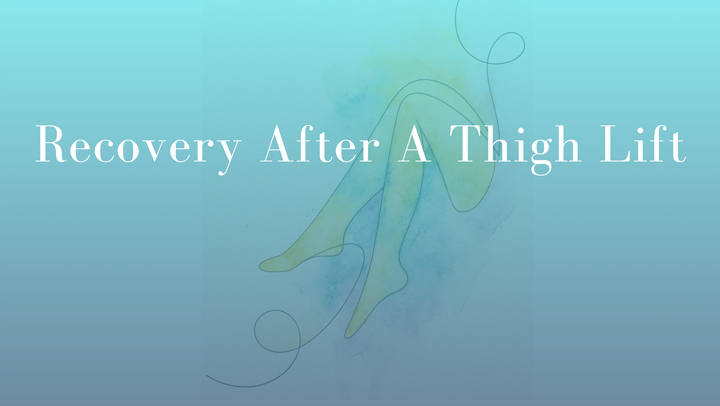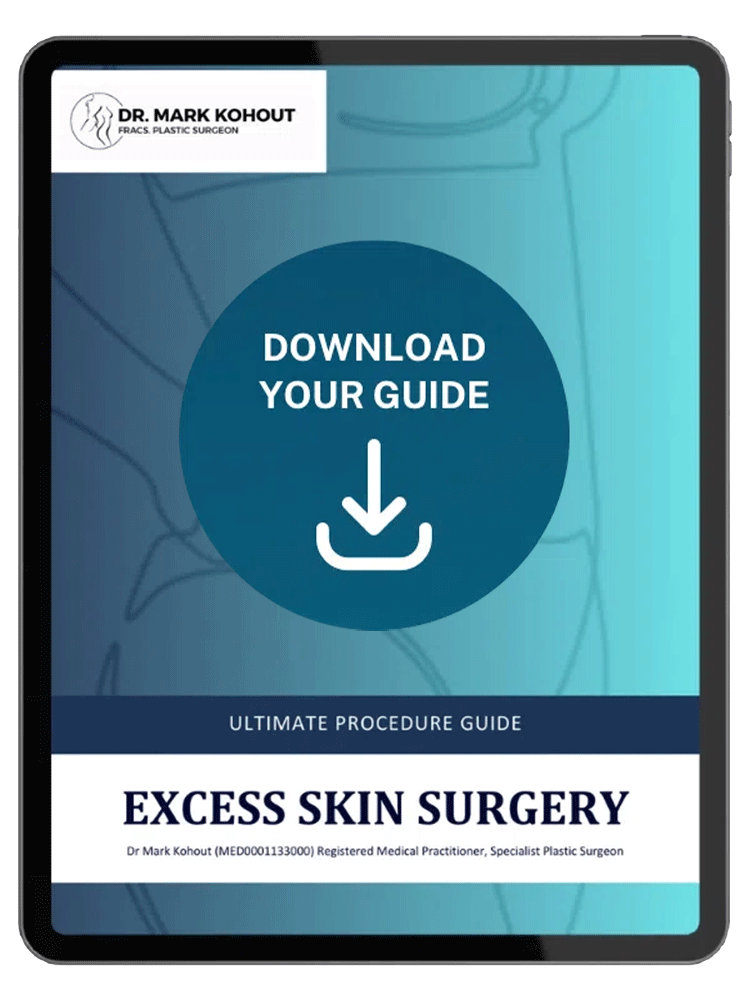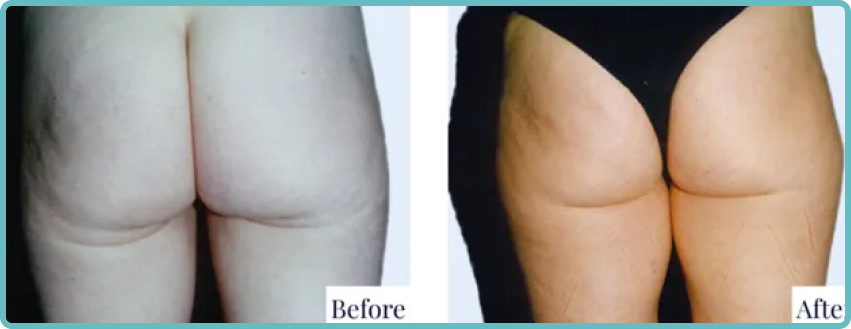
A thigh lift is a surgical procedure designed to reshape the thighs by removing excess skin and tightening the underlying tissue. Many people consider this operation after experiencing significant weight changes that leave the skin loose, or when natural ageing reduces elasticity and alters the appearance of the thighs. While the procedure itself is an important part of the journey, what happens afterwards is equally significant. Recovery following a thigh lift requires careful planning, patience, and ongoing medical guidance.
In Sydney, Dr Mark Kohout, a Specialist Plastic Surgeon, provides patients with detailed information about what to expect during the recovery period. This includes the likely stages of healing, activity restrictions, and the importance of consistent follow-up care. By gaining a realistic understanding of recovery, patients are better placed to prepare themselves and to approach surgery with well-informed expectations.
Understanding A Thigh Lift
A thigh lift, sometimes called thighplasty, is a procedure aimed at reshaping the thigh area to create less crepey skin and a more even contour. It usually involves the removal of redundant skin and the tightening of underlying soft tissue. In some cases, liposuction may be used in combination with surgical excision to adjust the shape of the thighs further.
The procedure is tailored to each individual. For some, surgery is limited to the upper inner thigh, where a small incision along the groin crease may be sufficient to achieve the intended outcome. In others, particularly after major weight loss, more extensive surgery may be required, including longer incisions along the inner thigh that extend downward toward the knee. A thigh lift may also be performed along the outer thigh if tissue laxity extends to this area. Because of these variations, recovery experiences differ significantly between patients. Some may find that healing is straightforward, while others may require more time and closer monitoring.
The Role Of Recovery In Surgical Outcomes
The recovery phase is as important as the procedure itself. Even the most technically precise operation depends on adequate healing time for the results to become established. Recovery is when the body undertakes the essential biological processes of wound healing, scar maturation, and tissue adaptation. This means that patients must respect the healing process and understand that time, rest, and carefully following instructions are part of achieving an optimal outcome.
Recovery outcomes vary from person to person. Younger patients often experience faster tissue repair, while those with reduced skin elasticity may require more time before they feel comfortable. The extent of the surgery also plays a major role, with more significant excisions typically associated with longer recovery periods. Lifestyle factors such as nutrition, hydration, and non-smoking status also make a measurable difference. Importantly, the willingness to follow postoperative guidance, including attending follow-up appointments, wearing compression garments, and avoiding activities that stress the surgical area, strongly influences how steadily recovery progresses.
Immediate Recovery: The First 24–48 Hours
The first two days after a thigh lift are generally spent in a hospital setting. Patients are closely observed for vital signs, fluid balance, and wound drainage. Compression garments are fitted immediately after surgery to reduce swelling and provide gentle pressure across the thighs, which helps to support the incisions as they begin to heal. Some patients have drains inserted at the incision sites, which are designed to collect excess fluid. These drains are usually removed within the first few days.
Discomfort during this period is expected, but it is usually manageable with prescribed pain relief. Swelling, bruising, and tightness across the thighs are also common. Walking is encouraged soon after surgery, not for long distances but in short, gentle movements within the hospital room. This helps to reduce the risk of blood clots, which is a known potential complication of major surgery.
Patients are discharged with clear instructions regarding incision care, garments, and prescribed medication. It is recommended that assistance be arranged at home during the first week, as bending, climbing stairs, and performing normal daily activities may be challenging. It is also critical that patients know which warning signs require urgent medical review, including sudden shortness of breath, significant bleeding, or fever.
The First Week After Surgery
The first week at home is often described as the most restrictive phase of recovery. Patients are advised to take things slowly, ensuring that the thighs are not placed under unnecessary stress. Incisions need to remain clean and dry, and patients are usually instructed on how to change dressings or when to return to the clinic for this to be done. Swelling is typically most noticeable in this early stage and bruising is common, although both tend to improve gradually.
Walking short distances around the home is encouraged, but stretching or bending movements that widen the thighs should be avoided. Compression garments must be worn as directed to reduce swelling and assist with skin re-draping. Pain and discomfort are generally most pronounced during the first few days but can usually be controlled with the medications provided.
During this week, patients usually attend their first review appointment with Dr Mark Kohout in Sydney. This visit allows the surgical team to check on wound healing, remove drains if they are still in place, and address any questions. Follow-up care at this stage is vital because it means complications are detected early and that patients feel supported during the initial phase of healing.
Weeks Two To Four: Regaining Mobility
By the second week, most patients notice an improvement in mobility. Bruising often begins to fade, and swelling, while still present, usually becomes less uncomfortable. Many people find that they can walk more easily and perform basic household tasks with less difficulty. Despite these improvements, the thighs remain vulnerable to tension, and patients are encouraged to continue wearing compression garments and to avoid stretching or high-impact movements.
Some sutures dissolve on their own, but if non-dissolvable stitches were used, they may be removed during a follow-up appointment in this period. Patients should continue to be careful when sitting, climbing stairs, or bending, as the incisions remain in the early stages of healing.
This stage is also when patients begin to feel more confident about resuming aspects of daily life. However, patience is essential, as the skin and soft tissue are still settling, and scar tissue is still forming. Regular review visits with Dr Mark Kohout provide an opportunity to assess healing and give personalised advice about gradually increasing activity.
Possible Risks And Complications During Recovery
Many patients are concerned about when they can resume work and normal social life. The timeframe varies depending on the type of work and the extent of surgery. Office-based or desk jobs can often be resumed after two to three weeks, provided the patient feels comfortable sitting for extended periods. Jobs that involve physical labour or heavy lifting may require a longer period of recovery, sometimes four weeks or more.
Patients also wonder about attending social events. While there is no strict rule, many prefer to wait until swelling and bruising are less visible and until they can comfortably wear clothing without significant compression garments. Ultimately, clearance to return to work and social activity should come from the surgeon during a follow-up review, as this supports safety and avoids premature strain on the healing tissues.
Exercise And Physical Activity
Physical activity is restricted in the early weeks to protect the healing incisions. Walking remains the main form of exercise during the first month, with the goal of maintaining circulation and preventing stiffness without overexerting the thighs.
More vigorous forms of activity, such as gym workouts, running, cycling, or swimming, should be postponed until at least six to eight weeks post-surgery. Even then, these activities should only be resumed after approval from the surgeon during a review appointment. Activities that involve stretching the inner thighs, such as yoga or lunges, must be avoided until scars have healed well and there is no risk of pulling at the incision lines. Attempting to return to exercise too early can place unnecessary tension on the tissues and increase the risk of wound complications.
Scar Healing And Long-Term Considerations
Scarring is an unavoidable part of surgery. For a thigh lift, scars are usually positioned along the inner thigh or groin crease so that they can be concealed beneath clothing. Initially, scars are often red, raised, and firm. Over time, they generally become flatter, softer, and paler, although this process may take twelve to eighteen months.
Scar care is an important part of long-term recovery. Patients are usually advised to protect scars from sun exposure, as ultraviolet light can darken them permanently. Silicone products, such as gels or sheets, may also be recommended in some cases, though this varies according to the surgeon’s preference and the individual’s healing process. Some patients may be instructed on gentle scar massage once the wounds have closed, as this can sometimes assist in softening the tissue.
While scars remain permanent, most people find they become less noticeable with time. Patience is essential, as the final appearance of scars is not immediate but the result of a lengthy maturation process.
Possible Risks And Complications During Recovery
Every surgical procedure involves risks, and thigh lifts are no different. The majority of patients heal without significant issues, but awareness of potential complications is important. Temporary effects such as swelling, bruising, and a feeling of tightness are considered normal. Some patients may also experience temporary numbness along the inner thigh, which usually improves over time as nerves recover.
Occasionally, small areas of delayed wound healing can occur, particularly in areas where the skin is under tension. Infection is possible, though uncommon, and requires prompt medical attention if symptoms such as fever, increasing redness, or pus at the incision site appear. Bleeding and the development of a haematoma, or collection of blood beneath the skin, are rare but recognised complications.
Another risk associated with major surgery is the development of blood clots in the legs, known as venous thromboembolism. Preventive measures include the use of compression garments, early mobilisation, and individualised risk assessments conducted before surgery. Regular follow-up appointments provide opportunities to detect and address any complications early.
Thigh Lift Surgery Before and After Images
Supporting Your Recovery In Sydney
Recovery after a thigh lift extends beyond the operation itself. Patients benefit from ongoing care, monitoring, and reassurance during the weeks and months after surgery. In Sydney, Dr Mark Kohout, Specialist Plastic Surgeon, personally provides follow-up care to review progress, confirm wounds are healing as expected, and advise on the appropriate time to return to normal activities.
Patients undergoing surgery in Sydney also benefit from access to accredited hospitals and post-operative care facilities. The emphasis is always on patient safety, comfort, and careful observation of the healing process. Each individual receives tailored advice because no two recoveries are the same.
Key Takeaways For Patients Considering A Thigh Lift
Recovery after a thigh lift is a gradual process that unfolds over weeks and months. The first two weeks are devoted to rest, incision care, and gentle walking. Returning to work and daily activities usually becomes possible after two to three weeks for patients in office-based jobs, while more physically demanding work requires longer recovery. Exercise must be postponed until clearance is given, usually after six to eight weeks.
Scars are an inevitable aspect of this surgery, but with time they generally fade and soften. Regular follow-up appointments with Dr Mark Kohout in Sydney are an essential part of recovery, where progress is monitored, complications are detected early, and patients feel supported throughout the healing journey.
FAQs About Recovery After A Thigh Lift
How Long Do Compression Garments Need To Be Worn After A Thigh Lift?
Compression garments are usually recommended for several weeks after surgery to help reduce swelling and provide support while tissues heal. The exact duration varies between patients and is advised during follow-up appointments.
Is It Normal To Feel Tightness In The Thighs During Recovery?
Many patients describe a sensation of tightness or pulling across the thighs in the early weeks. This typically improves as the tissues settle, though the timeline is different for each individual.
When Can I Sit Comfortably After A Thigh Lift?
Sitting can be uncomfortable in the first days after surgery, especially if incisions extend along the inner thigh. Most patients find that comfort improves gradually within a couple of weeks, depending on healing progress.
Can I Sleep On My Side After A Thigh Lift?
Sleeping positions may need to be adjusted in the first weeks. Patients are often more comfortable lying on their back with pillows for support until incisions have healed sufficiently.
What Happens If I Accidentally Overstretch My Legs Early In Recovery?
Accidental stretching may cause temporary discomfort or pulling at the incision line. Patients should mention any concerns at their next review so the surgical team can check healing and advise if additional care is needed.
Do Thigh Lift Scars Always Remain Visible?
Scars from a thigh lift are permanent but usually fade over time. Their appearance depends on factors such as skin type, healing characteristics, and adherence to scar care recommendations.
Medical References
- Complications Associated With Medial Thigh Lift https://pmc.ncbi.nlm.nih.gov/articles/PMC4728900/
- A Comprehensive Review of Medial Thighplasty: The Role of Liposuction in Surgical Outcomes and Complications https://pmc.ncbi.nlm.nih.gov/articles/PMC11989391/
- Thighplasty – StatPearls – NCBI Bookshelf https://www.ncbi.nlm.nih.gov/books/NBK594236/
- Liposuction – Mayo Clinic https://www.mayoclinic.org/tests-procedures/liposuction/about/pac-20384586
Why Do Follow-Up Appointments Matter During Recovery?
Regular reviews with the surgeon allow for close monitoring of healing, adjustment of activity guidelines, and early detection of any issues that may affect recovery.
Take The Next Step
If you are considering a thigh lift in Sydney, scheduling a consultation with Dr Mark Kohout – Specialist Plastic Surgeon is the best way to understand how the procedure and recovery may apply to your individual circumstances. Every patient’s situation is unique, and a thorough consultation allows for a full discussion of surgical options, recovery timelines, and potential risks. Taking this step means that decisions are made with clear, personalised medical advice.
Further Reading
- Read more about Dr. Mark Kohout’s Body Surgery Pricing Page
- Read more about Dr. Mark Kohout’s Thigh Liposuction Gallery Page
Related Blog Posts
BodyTite: A Solution for Skin Laxity…
Have you ever considered liposuction, but worried about the potential for loose or sagging skin afterwards? Many patients express this concern, especially those who are a bit older, have gone through…
Managing Body Lift Scars
Healing in Plain Sight: A Comprehensive Approach to Body Lift Scar Care A body lift is a surgical procedure designed to remove excess skin and address body contouring, often following significant weight…
Managing Thigh Lift Scars: A Guide
Managing Thigh Lift Scars: A Guide A thigh lift, also referred to as thighplasty, is a surgical procedure designed to remove excess skin and fat from the thighs, often following significant…







